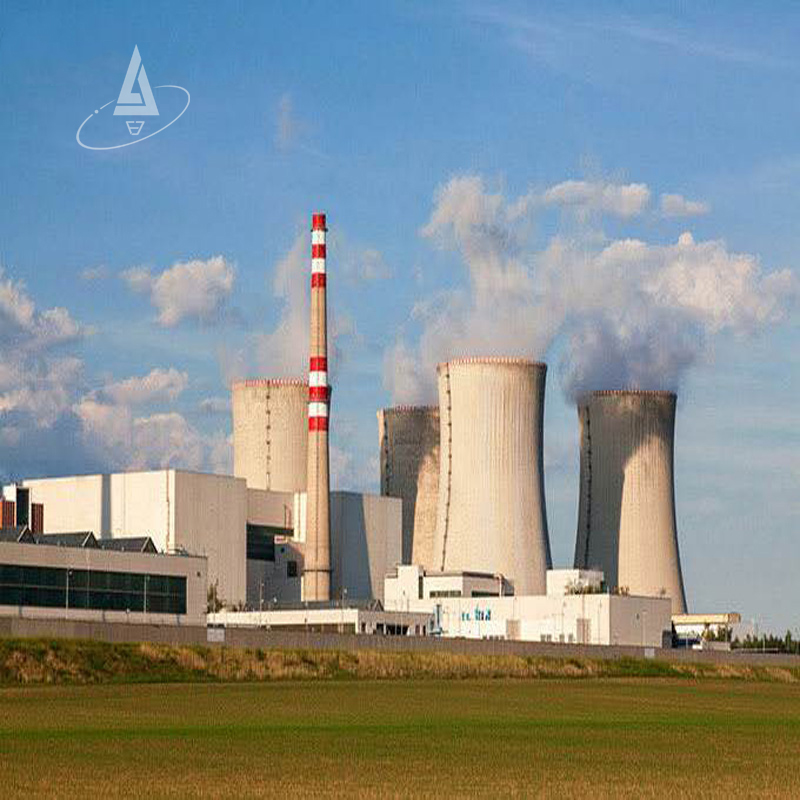April 17,2023.
India’s Water vs. Energy Problems
India experienced an unprecedented water crisis in early 2016 that also led to an energy crisis. Operators of the 2,100 MW Farakka coal-fired power plant in West Bengal shut down the entire plant due to a lack of water. This power station, which generates about 1.13 percent of all of India’s electricity coming from coal, was shut down for 12 consecutive days because of the water shortageIn coal-fired power plants, water is used to produce steam to run the turbines and to condense the steam before it is returned to the boiler. A typical coal plant with a once-through condenser withdraws between 70 and 180 billion gallons of water per year, of which 0.36 to 1.1 billion gallons are not returned to the river, lake, or ocean which provided the water. During the 2016 crisis, the vast township on the Ganges River, where more than 1,000 families of Farakka plant workers live, ran out of water. Thousands of bottles of drinking water were distributed to residents, and fire engines rushed to the river to extract water for cooking and cleaning.The 1,130 MW Parli power station in Maharashtra state has been shut down since July 2015 due to a lack of water. In 2010, Maharashtra’s state-owned utility, MahaGenco, also had to shut down several units of the 2,340 MW Chandrapur Thermal Power Station due to the impact of drought. This led to power outages across the populous state. The construction of the National Thermal Power Corporation’s Solapur power plant in Maharashtra has likewise been delayed due to huge question marks about where the plant will get water to run on.
Similarly, the 1,720 MW Raichur Thermal (coal-fired) Power Station (RTPS) in Karnataka state has also been forced to shut down by a lack of water. The drinking water supply has also been severely affected in the city and nearby towns, particularly in the areas where the supply depends on the Krishna River.
India’s hydropower plants have been badly stricken as well. According to the South Asia Network on Dams, Rivers, and People, India’s hydropower generation has dropped by nearly 20 percent compared to 2015, even as 1.5 GW of new hydro capacity was installed. At one point in early May 2016, for example, the 1 GW Tehri Hydroelectric Dam, India’s tallest dam, had no usable water stored in its reservoir on the Bhagirathi River in the Himalayas, a tributary of the upper Ganges River, even though it is designed to hold 2.6 billion cubic meters. In May 2016, Central Water Commission (CWC) of India data showed that the Tehri Dam was using almost none of its storage capacity of 2.6 billion cubic meters. At the time, total usable water available in 91 reservoirs across India monitored by the CWC was at just under 31 billion cubic meters, 19 percent of their capacity.
These incidents, taken together, underline the severity and importance of the water-energy nexus and the resulting crisis in India. Water and energy systems are closely intertwined; the scarcity of water in the age of climate change has impacted the coal-fired power plants particularly negatively. While water forms an essential component in all stages of energy production and electricity generation, energy is needed to extract, convert, purify, and deliver water for a variety of human uses, and treat wastewater for auxiliary uses
Analyzing the Challenge
The Indian water problem has to be viewed as an opportunity for coal-fired producers rather than just a problem. Theoretically coal-fired power plants can generate water. Hydrogen in the coal can be condensed from the flue gas. Dry cooling eliminates evaporation. Catalytic filters with hydrated lime injection capture all the air pollutants and eliminate FGD wastewater discharge. Zero liquid discharge eliminates any contamination of receiving streams. The power plant can use treated municipal wastewater as its water source. McIlvaine has proposed that municipal sewage and power plants be co-located. The wet sewage sludge can be gasified and used as a reburn fuel in the coal-fired boiler. It not only reduces coal consumption but reduces NOx. The catalytic filter/hydrated lime will greatly reduce power plant costs while also reducing emissions.The use of municipal wastewater and ZLD makes a positive rather than negative contribution to water resources. The dry cooling may be expensive and unnecessary if ample municipal wastewater is available for recirculation.
The melting of snow in the Himalayas produced less water compared to previous years. Some 85 percent of the country’s drinking water comes from aquifers, but their levels are falling, according to the WaterAid organization.
The scarcity of water in India makes it difficult for water and energy sector officials to trade-off between power generation and the use of water for drinking, agriculture, and other industries. Some analysts argue that in a water scarcity scenario, power generation will come at the expense of other uses. A new Greenpeace report notes if the Indian government continues to push for the construction of more coal plants, the water crisis will grow significantly worse. The report estimates over 170 GW of coal power plants, representing 40 percent of the proposed Indian coal fleet, are in areas that are facing high or extremely high water stress.
A report issued by the Prayas Energy Group agreed that the construction of ever more water-cooled coal-fired power stations would cause “immense stress” on water resources in the areas close to plants. The authors also cautioned that, due to variations in annual rainfall, there was no guarantee year-round water would be available for power stations.
Another major problem is the declining groundwater supplies due to over-extraction by farmers. This is because groundwater is an open-access resource and anyone can pump water from under his or her own land. Given how highly fragmented land ownership is in India, with millions of farmers and an average farm size of less than two hectares, the tragedy of the commons is inevitable.
Coal-fired power plants can also boost agriculture. Some of the CO2 from the coal-fired power plant can be used in indoor agriculture to cause growth rates for crops such as tomatoes to increase by 40 percent. Water usage is greatly reduced and runoff eliminated. To give some perspective on this option,Shell is already sending CO2 to 550 greenhouses. . BHE Energies grows 22 million lbs/yr of tomatoes at one of its Utah plants and many new indoor agriculture facilities with gas engines for CO2 +CHP are being built.
Although water is one of India’s most scarce natural resources, farmers use two to four times more water to produce a unit of major food crop than in China or Brazil. Hence, the annual economic survey of 2015 explains that it is imperative that the country focus on improving the efficiency of water use in agriculture. The survey gives numbers: the U.S. National Aeronautics and Space Administration (NASA) has said India’s water table is declining at a rate of 0.3 meters per year.
Reservoirs and wells are now running dry. India’s purported sand mafia, operating in complicity with local officials, has also contributed to the problem by illegally removing sand — important to allow water to percolate into underground aquifers — from riverbeds to supply concrete for India’s construction boom.
In order to move toward addressing the energy crisis, it is suggested exploring the feasibility of building bigger dams and reservoirs in proximity to water-scarce towns in order to preserve and harvest more rainfall. This will add to the existing efforts to exploit the available water resources, rainfall, and surface water.Large-scale dams and reservoirs will also enhance watershed development and rainwater harvesting, which increases soil moisture, recharges groundwater, and permits a second crop to be planted.
It is recommended that India’s energy policy needs to vigorously make use of the availability of abundant solar energy in states where water is scarce, for instance, in Rajasthan. This needs to be merged with the Jawaharlal Nehru National Solar Mission (JNNSM) and the solar cities development program, which are aimed at installing 20,000 MW of solar power by 2022. This would reduce India’s dependence on fossil fuels, especially coal, and consequently reduce the overall consumption of water by coal-fired power plants.
An ideal situation would be to devise measures to cut down on the overall demand and consumption of water. Sops of free electricity and irrigation subsidies for affluent farmers indulging in water-intensive farming should be eliminated, and instead, policies promoting water efficiency like an adequate water distribution system in urban centers and cooperative agreements with the users of aquifers in rural areas, need to adopted.
Also India needs to re-think its agricultural policy. The country has become a net water exporter in the sense that it exports water intensive crops like rice, soybeans, and sugar, unlike China, which imports water-intensive soybeans, cotton, meat, and cereal grains, while exporting vegetables, fruits, and processed food, which are not water-intensive. In essence, India needs to formulate policies that encourage and incentivize farmers to grow crops that consume less water and take appropriate measures for a climate-smart agriculture.
From Mcilvaine Data Base



